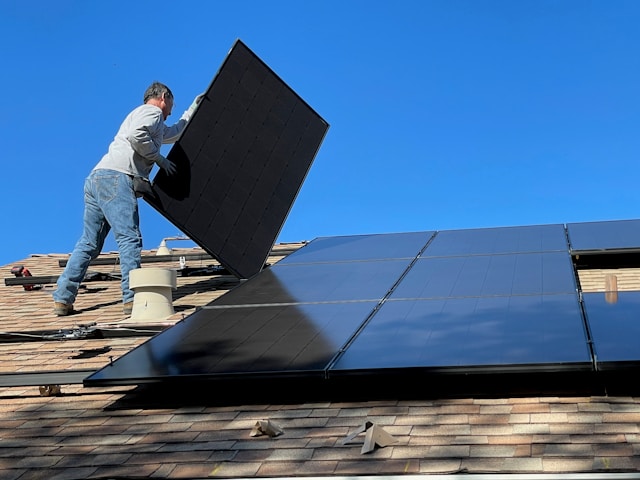As the world strives to reduce reliance on fossil fuels and mitigate climate change, renewable energy technologies have emerged as key solutions for sustainable development. Solar-powered HVAC systems represent a shining example of innovation, offering an eco-friendly alternative to traditional heating, ventilation, and air conditioning (HVAC) systems. By harnessing the power of the sun, these systems provide efficient and cost-effective cooling and heating solutions while reducing carbon emissions and environmental impact.
How Solar-Powered HVAC Systems Work
Solar-powered HVAC systems utilize photovoltaic (PV) panels to convert sunlight into electricity, which is then used to power the HVAC components, such as compressors, fans, and pumps. These systems can be designed to provide both cooling and heating capabilities, depending on the configuration and requirements of the building.
In a typical setup, solar panels are installed on the roof or in a sunny area near the building, where they capture sunlight and generate DC electricity. This electricity is then converted to AC power using inverters and distributed to the HVAC system to operate efficiently.
Key Benefits of Solar-Powered HVAC Systems
- Energy Efficiency: Solar-powered HVAC systems leverage clean, renewable energy from the sun, reducing reliance on grid electricity and fossil fuels. This results in lower energy bills and reduced carbon emissions, contributing to environmental sustainability.
- Cost Savings: While the initial investment in solar panels and HVAC equipment may be higher than traditional systems, solar-powered HVAC systems offer long-term cost savings through reduced energy consumption and lower utility bills. Additionally, incentives such as tax credits and rebates may further offset upfront costs.
- Reliability: Solar energy is abundant and readily available, making solar-powered HVAC systems reliable and resilient, particularly in areas with ample sunlight. With proper design and installation, these systems can provide uninterrupted comfort even during power outages.
- Scalability and Flexibility: Solar-powered HVAC systems can be customized to meet the specific needs of different buildings and applications, from residential homes to commercial buildings and industrial facilities. They can also be integrated with existing HVAC systems or designed as standalone solutions.
- Environmental Benefits: By reducing reliance on fossil fuels and minimizing greenhouse gas emissions, solar-powered HVAC systems help mitigate climate change and promote environmental stewardship. They contribute to cleaner air, water, and ecosystems, benefiting both present and future generations.
Considerations and Challenges
While solar-powered HVAC systems offer numerous benefits, there are some considerations and challenges to be aware of:
- Space Requirements: Solar panels require adequate space for installation, which may be limited in some urban or densely populated areas.
- Initial Cost: The upfront cost of solar panels and associated equipment can be higher than traditional HVAC systems, although long-term savings often offset this initial investment.
- Installation and Maintenance: Proper installation and maintenance are essential for maximizing the performance and longevity of solar-powered HVAC systems. This may require professional expertise and periodic inspections to ensure optimal operation.
Conclusion
Solar-powered HVAC systems represent a sustainable and forward-thinking approach to indoor comfort and energy management. By harnessing the power of the sun, these systems offer efficient, cost-effective, and environmentally friendly solutions for heating and cooling residential, commercial, and industrial buildings. As technology continues to advance and renewable energy adoption grows, solar-powered HVAC systems will play an increasingly vital role in shaping a cleaner, greener, and more sustainable future for all.
